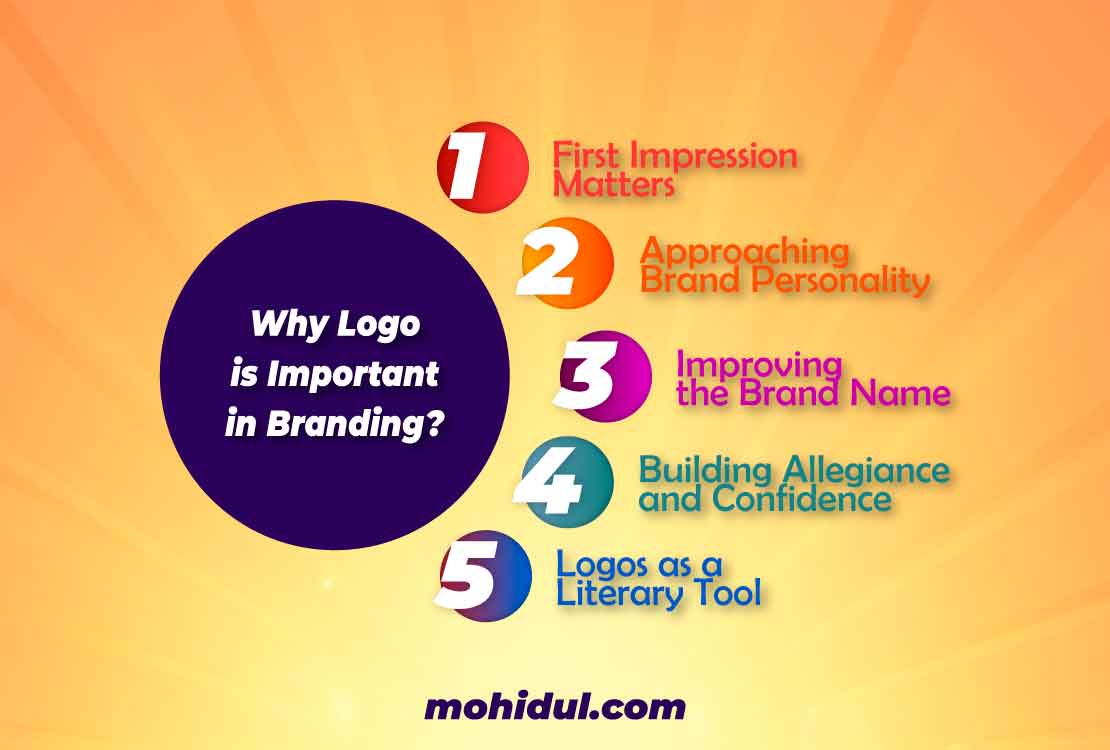Why Logo is Important in Branding?
Logos are like the faces you recall when you think of a brand. The world is now visually-driven. And for this, a strong logo is important in branding. It’s often the first thing a potential customer notices about a company. It is a powerful tool because it plays a key role in creating the first impression.
Logos have many purposes other than only decoration. They aptly depict the company’s values, goals, and behavior as well as its standing. The rivalry is getting much more fierce in many spheres. People will remember a positive image for a long time; hence, you will stand out. Consistent use of the same mark across several media helps a company establish trust, consumer loyalty, and brand awareness.
I will discuss the five primary responsibilities logos fulfil for branding. Let us begin now.
1. First Impression Matters
Regarding branding, first impressions are pivotal. Usually, the logo is the first graphic representation of a company that clients find on a product box, website, app, or social media page. The emblem distinguishes itself the most. Given this much attention, you may effectively capture the essence of your business.
Just look at Nike’s well-known style. Though simple, it has a great deal of influence. Nike’s swoosh on their shoes captures movement, speed, and power. That is not its loudness. It complements Nike’s goal of exciting all players.
On the other hand, another familiar sign is the bitten apple. You guessed it correctly. The Apple brand is visible right now here. It is a brand for fresh technology, simplicity of use, and imagination. About the designing of an excellent logo, what do you believe to be important? Things like typeface, colors, and forms help one to tell the tale of a brand.
2. Approaching Brand Personality Out There
A mark reveals the core of a brand, not only a beautiful image. From the typeface to the colors, every component of the logo is aimed to convey the core values of the company. While colors that are vivid and forceful usually reflect life and fresh ideas, soothing and elegant hues might help you to project professionalism and dependability.
Consider how brands use color. Fast-food companies like McDonald’s and Coca-Cola utilize red because it evokes action, excitement, and energy. Conversely, organizations like PayPal and Chase Bank sometimes utilize blue since it’s usually connected with dependability and confidence. Typography also gives the name more layers that distinguish it. While a colorful, handwritten font can convey friendliness and inventiveness, a crisp sans-serif typeface would support modernism and efficiency.
A company’s logo design creates an emotional link between its brand and its consumers when it complements its basic values and the target audience. Customers are more inclined to stick with a company that speaks to their values and sense of self; thus, this link may increase their loyalty.
3. Improving the Brand Name
A logo’s most crucial function is to enable brand recognition among people. Consumers will be able to identify a company straight away and remember its brand more than those of its rivals. Look at McDonald’s’ golden arches or Nike’s mark. Brand awareness is essential for attracting and retaining customers because it fosters familiarity and trust. These designs are simple, distinct, and easy to remember. They are widely used around the world.
You have to remain constant if you are to develop this knowledge. One is more likely to recall a brand the more times they view an image. Using the same logo on their marketing materials, websites, social media, and packages, companies highlight their visual character. Regular application of it increases awareness and strengthens marketing messages.
Consumers begin to relate the mark with dependable service, premium products, and first-hand knowledge over time.
4. Building Allegiance and Confidence
Knowing a brand helps one to develop trust. Customers are more likely to deal with a company they know, so a logo helps them to do so. Strong images that consumers can recall enable them to choose one brand over another and feel comfortable in a crowded market. A logo begins to convey confidence when it constantly performs as it promises to accomplish.
For example, individuals instantly picture the desired coffee taste when they see the Starbucks logo. Customers know that since Starbucks has goodwill, they will get the same premium products and services wherever they visit. If a company keeps this promise, its consumers are more inclined to return.
5. Logos as a Literary Tool
Apart from raising awareness of and confidence in a business, logos assist in narrating its story. A logo can convey what a company stands for, its values, and its objectives using appropriate use of graphic components. By leaving some space around the “E” and “x,” the FedEx logo deftly hides an arrow between them.
FedEx’s image as a logistics organization gains credibility from this arrow, which displays its speed and accuracy.
Names could also help startups to convey their narratives. For example, see how straightforward Dropbox’s approach is. The company’s straightforward box logo helps to highlight how easy sharing and storing data should be accomplished. The simplicity and ease of use of the picture reflect the brand’s dedication to providing products for people’s convenience.
While honoring where they come from, logos enable companies to flourish. As businesses evolve to satisfy their consumers whose tastes are continually shifting, logos may also alter. Still, most successful businesses respect the past by conserving small elements of their former logos. It demonstrates their growth. For instance, Pepsi’s logo has evolved throughout the years yet always features the same spherical form and red-white-blue color scheme.
At the End: All things considered, a logo is a crucial component of branding since it tells people what a company stands for, facilitates recognition of it, and creates a memorable first impression.
It’s a fantastic approach to build confidence and keep the consumers returning. In a sector where images rule, a well-designed brand that jumps out is more crucial than ever since businesses struggle for attention. If companies properly apply their logos as part of a larger branding plan, they will attract more attention, convey their message, and experience long-term success.






Leave a Reply